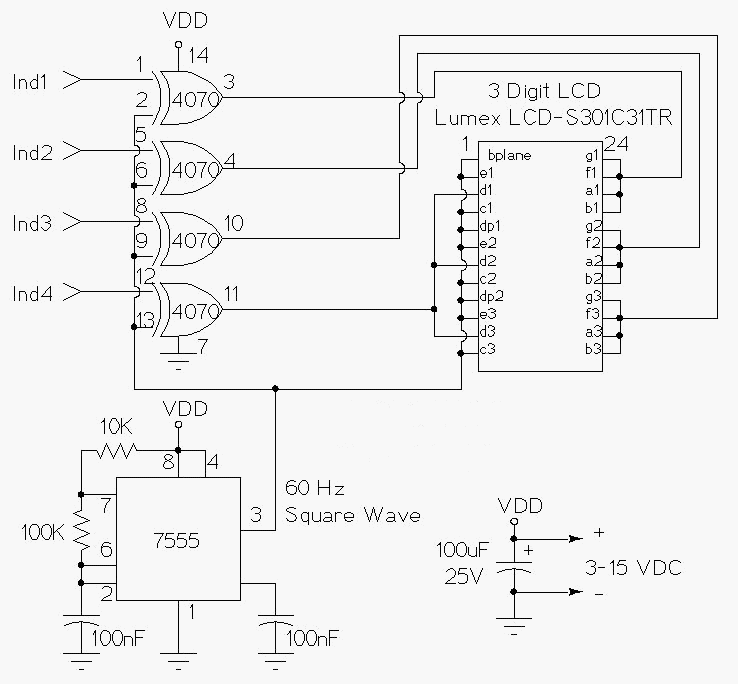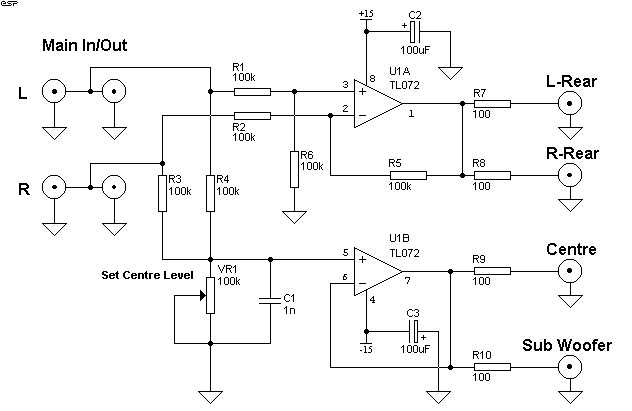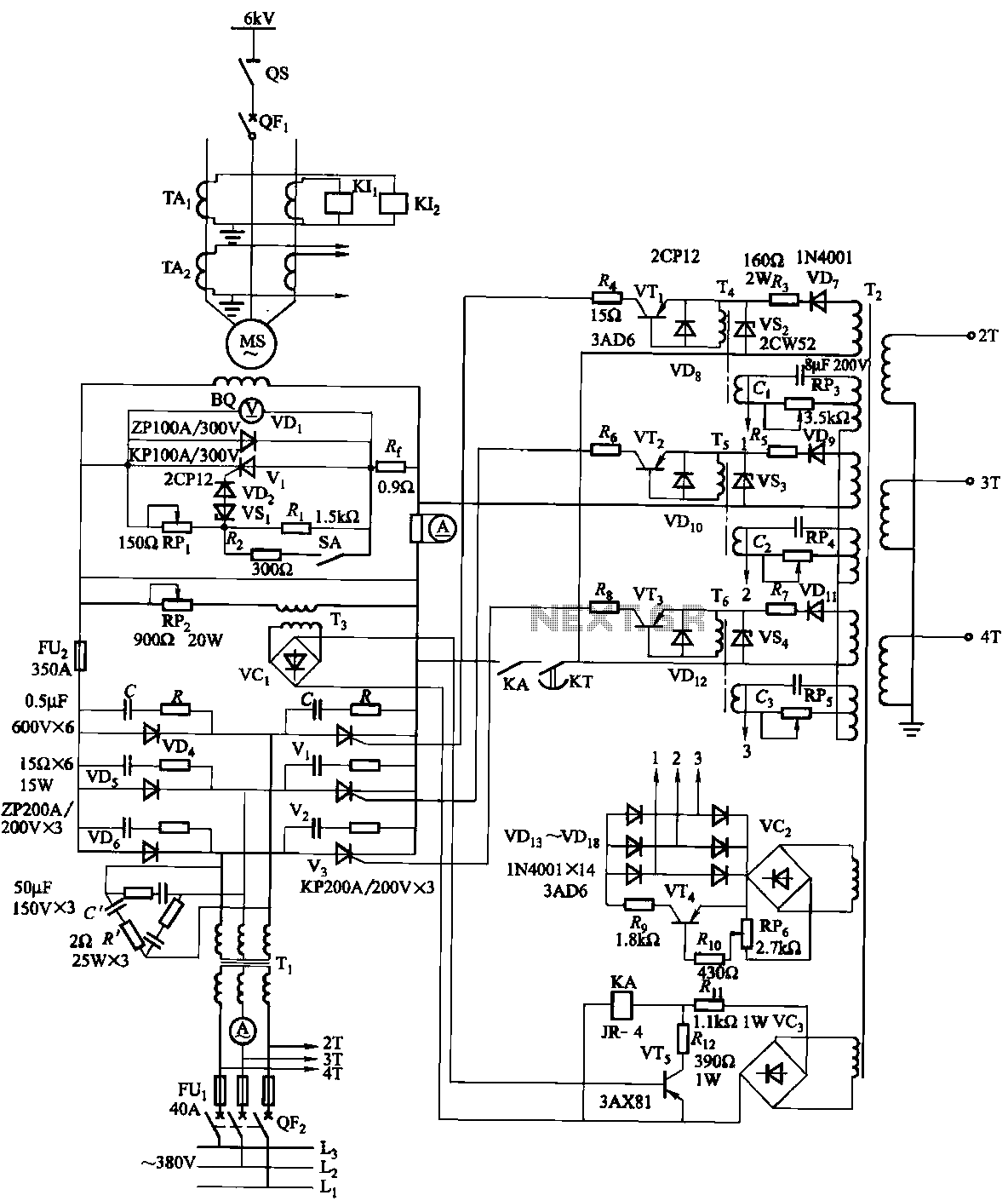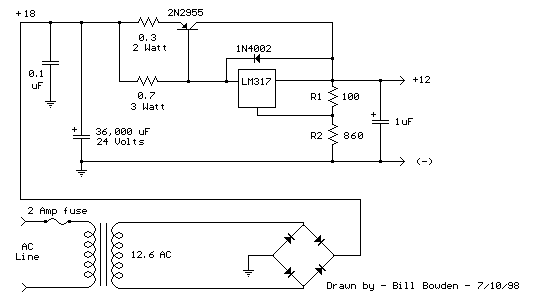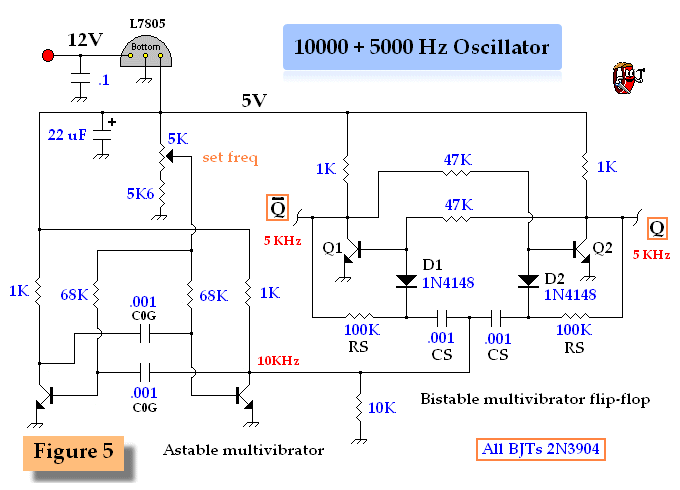
Simple low voltage Oscillator circuit
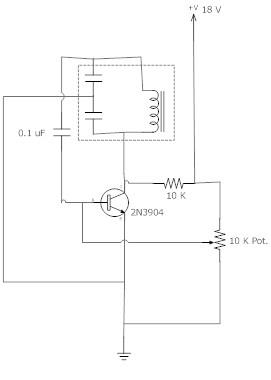
The frequency remains stable as the voltage decreases. It is referred to as the "backwards JT" because it operates optimally with a bifilar coil and a single transistor. With a modification to the circuit, it is possible to deplete a battery down to 0.1 volts. Utilizing a 2N3055 transistor, this module can be adjusted for a wide range of frequencies and can operate for an extended period at low voltage. Additionally, there is an intention to interface a narrow pulse output. The electromagnetic components are expected to be recycled and contained within shielding, minimizing RF harmonics to levels significantly lower than those emitted by a television. Under optimal conditions, the waveform on the second coil may enable the generation of radiant energy, as indicated by some emerging projects.
The described circuit utilizes a bifilar coil configuration, which consists of two wires wound together to create a magnetic field that enhances the inductance and efficiency of the system. The use of a 2N3055 transistor allows for high current handling and robustness, making it suitable for low-voltage applications. The ability to operate down to 0.1 volts is particularly significant as it extends the usability of batteries, allowing for more efficient energy consumption and longer operational life.
The circuit's design facilitates the generation of a stable frequency output, which is essential for applications requiring precise timing or control signals. The mention of interfacing a narrow pulse output suggests that the circuit can be integrated with other systems, potentially for signal processing or communication purposes.
Moreover, the emphasis on minimizing RF harmonics through proper shielding indicates a focus on electromagnetic compatibility and the reduction of interference with other electronic devices. This is crucial in maintaining the integrity of signals in sensitive applications.
The potential for generating radiant energy from the second coil under specific conditions points to innovative applications in energy harvesting or wireless power transmission. This concept aligns with ongoing research in the field of alternative energy sources and could lead to advancements in sustainable technologies.
In summary, the circuit described is a versatile and efficient design that leverages the properties of bifilar coils and a robust transistor to achieve low-voltage operation, stable frequency output, and minimal electromagnetic interference, while also exploring the possibilities of radiant energy generation.The frequency is pretty stable as the volts drop. The reason i called it the backwards jt is cause it works best with a bifilar coil and one transistor. and with one tweak to your circuit you can run a battery down to 0. 1 volts. using a 2n3055 transistor this is a module that can be modified for wide range of frequencies and can last long time on low voltage.
Hopefully to interface a narrow pulse output. I am hopeful that the electromagnetic components will be recycled and remain inside shielding leaving only very very little RF harmonics as a good neighbor policy. much less than a television gives off. the exact wave on the second coil under the right conditions that another form of electricity may be available as a radiant form as some projects are beginning to show.
🔗 External reference
The described circuit utilizes a bifilar coil configuration, which consists of two wires wound together to create a magnetic field that enhances the inductance and efficiency of the system. The use of a 2N3055 transistor allows for high current handling and robustness, making it suitable for low-voltage applications. The ability to operate down to 0.1 volts is particularly significant as it extends the usability of batteries, allowing for more efficient energy consumption and longer operational life.
The circuit's design facilitates the generation of a stable frequency output, which is essential for applications requiring precise timing or control signals. The mention of interfacing a narrow pulse output suggests that the circuit can be integrated with other systems, potentially for signal processing or communication purposes.
Moreover, the emphasis on minimizing RF harmonics through proper shielding indicates a focus on electromagnetic compatibility and the reduction of interference with other electronic devices. This is crucial in maintaining the integrity of signals in sensitive applications.
The potential for generating radiant energy from the second coil under specific conditions points to innovative applications in energy harvesting or wireless power transmission. This concept aligns with ongoing research in the field of alternative energy sources and could lead to advancements in sustainable technologies.
In summary, the circuit described is a versatile and efficient design that leverages the properties of bifilar coils and a robust transistor to achieve low-voltage operation, stable frequency output, and minimal electromagnetic interference, while also exploring the possibilities of radiant energy generation.The frequency is pretty stable as the volts drop. The reason i called it the backwards jt is cause it works best with a bifilar coil and one transistor. and with one tweak to your circuit you can run a battery down to 0. 1 volts. using a 2n3055 transistor this is a module that can be modified for wide range of frequencies and can last long time on low voltage.
Hopefully to interface a narrow pulse output. I am hopeful that the electromagnetic components will be recycled and remain inside shielding leaving only very very little RF harmonics as a good neighbor policy. much less than a television gives off. the exact wave on the second coil under the right conditions that another form of electricity may be available as a radiant form as some projects are beginning to show.
🔗 External reference
Warning: include(partials/cookie-banner.php): Failed to open stream: Permission denied in /var/www/html/nextgr/view-circuit.php on line 713
Warning: include(): Failed opening 'partials/cookie-banner.php' for inclusion (include_path='.:/usr/share/php') in /var/www/html/nextgr/view-circuit.php on line 713
